Looking out my kitchen window, the winter scene seemed dull. I longed for fresh, vibrant greens. That’s when I discovered microgreens. As a landscaper, I’ve always loved plants. Microgreens showed me a new way to garden right on my countertop.
Microgreens are tiny but mighty, full of flavor and nutrients. They can have up to 40 times more nutrients than full-grown plants. These young greens are easy to grow and add a gourmet touch to meals all year.
Whether you’re an expert or new to gardening, growing microgreens at home is fun and rewarding. With a few simple things and patience, you can turn your kitchen into a micro-farm. Harvest fresh greens in just a week.
This guide will take you through the world of microgreens and micro herbs, focusing on basil. You’ll learn to start an indoor garden, care for these plants, and use them in cooking. Get ready for a green adventure that’s good for your body and soul!
Key Takeaways
- Microgreens are nutrient-dense young plants harvested shortly after germination
- Growing microgreens at home is easy, cost-effective, and provides fresh greens year-round
- Basil microgreens are popular due to their ease of cultivation and versatility in cooking
- Microgreens can contain up to 40 times more nutrients than mature plants
- With simple supplies and patience, you can create your own micro-farm in your kitchen
Introduction to Microgreens and Micro Herbs
Microgreens are young vegetable greens that have become popular in the culinary world. They first showed up on chefs’ menus in San Francisco in the 1980s. By the mid-1990s, they spread to Southern California. Now, you can grow them at home and enjoy their flavors all year.
Definition of microgreens and micro herbs
Microgreens are young seedlings of vegetables and herbs, harvested when they are 5-7 cm long. They include the stems, which you can also eat. They are bigger than sprouts but smaller than baby greens, offering a unique taste and texture. Some microgreens grow fast, taking 10-14 days to harvest, while others take 16-25 days.
Differences between microgreens, sprouts, and baby greens
Microgreens are different from sprouts and baby greens. They have stronger flavors and come in many shapes, textures, and colors. Unlike sprouts, they need soil or another medium to grow. They are harvested before baby greens, making them unique in growth stages.
Benefits of growing microgreens at home
Growing microgreens at home has many benefits. They are packed with nutrients, having up to 40 times more vitamins and minerals than mature greens. For example, red cabbage microgreens have a lot of vitamin C. Growing them indoors lets you enjoy fresh greens all year while saving money. Store-bought microgreens can be expensive, but growing them yourself is cheaper.
| Aspect | Microgreens | Sprouts | Baby Greens |
|---|---|---|---|
| Growth Time | 7-25 days | 2-7 days | 25-40 days |
| Growing Medium | Soil or alternative | No soil, water only | Soil |
| Harvest Method | Cut above soil | Entire plant consumed | Cut above soil |
| Nutrient Density | Very high | High | Moderate |
There are over 25 types of microgreens you can grow, like broccoli, kale, and sunflower, in a small space. You can use them as a garnish, in juices, smoothies, or salads. Microgreens make meals more nutritious and look better.
What is a Micro Herb?
Micro herbs are small, flavorful plants picked when they are young. They are like tiny versions of the herbs you know, but with a big taste and nutritional punch. You can find them on windowsills and in small pots in kitchens everywhere.
Characteristics of micro herbs
Micro herbs grow to be 2-4 inches tall and are ready to be picked in 21-28 days. They have strong flavors and bright colors, making them great for adding a touch to dishes. Because they grow fast, you can have fresh herbs all year, even if you don’t have much space.
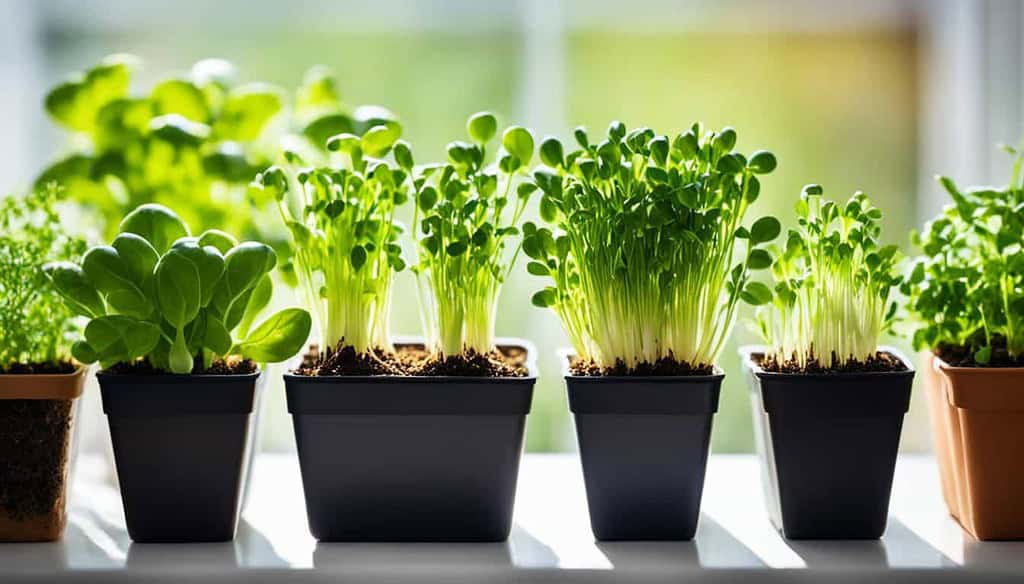
Popular micro herb varieties
Popular micro herbs include basil, cilantro, parsley, dill, and fennel. These small greens add a zesty taste to soups and salads. Aromatic types like lavender and peppermint are not only good for cooking but also for health.
| Micro Herb | Flavor Profile | Common Uses |
|---|---|---|
| Basil | Sweet, peppery | Italian dishes, salads |
| Cilantro | Citrusy, tangy | Mexican cuisine, garnish |
| Dill | Tangy, slightly bitter | Fish dishes, pickling |
| Kale | Earthy, mild | Smoothies, salads |
| Amaranth | Earthy, nutty | Grain substitute, garnish |
Nutritional benefits of micro herbs
Micro herbs are packed with vitamins, minerals, and antioxidants, often up to 40 times more than regular herbs. They are low in calories but high in flavor, making them a great choice for adding nutrition to your meals.
“Micro herbs are nature’s flavor bombs, packing a punch of taste and nutrition in every tiny leaf.”
Growing micro herbs at home is a great way to have fresh greens all the time. With just a windowsill, pot, and some soil, you can start your own micro herb garden. Enjoy these tasty and nutritious greens in no time.
Getting Started with Growing Microgreens
Growing microgreens at home is easy and rewarding. It keeps your kitchen fresh with nutrient-dense greens all year. These greens are zesty and look great. They have up to forty times more vitamin E and six times more vitamin C than regular greens.
To start, you’ll need a few basic things:
- Shallow grow trays
- Growing medium (like compost or coco coir)
- Seeds (like cress, basil, or other micro herb varieties)
- A sunny windowsill or grow light
First, soak your growing medium and spread it out in the tray. Then, sow your seeds thickly on top, pressing them gently into the soil. Cover with a thin layer of the medium and keep it moist.
Microgreens are ready to eat in just 7-10 days, making them perfect for quick results. They may be small, but they’re packed with nutrients. Studies show they have four to forty times more nutrients than regular greens.
For growing microgreens, you only need a little light. Try different types to find your favorites. Enjoy the fresh taste of your own microgreens in your meals.
“Microgreens are possibly the easiest fresh produce to grow at home, providing a continuous supply of nutrient-rich greens right from your windowsill.”
With little effort and space, you can grow many tasty and nutritious microgreens. They add vibrant colors and strong flavors to your meals. When true leaves start to grow, it’s almost time to harvest and enjoy your hard work.
Growing Basil Microgreens: A Step-by-Step Guide
Growing microgreens at home is rewarding, especially with micro basil. These tiny herbs are full of flavor and nutrients. Let’s dive into how to grow them step by step.
Selecting Basil Seeds
Pick top-quality basil seeds for microgreens. Genovese basil is a great choice, with more nutrients than full-grown basil. Use about 15 seeds per square inch or 2 tablespoons per tray for good spacing.
Preparing the Growing Medium
Choose a potting mix that drains well for your micro herbs. Soak the soil before planting. The blackout method with weights works better than covering with a dome, helping roots grow strong and getting nutrients easily.
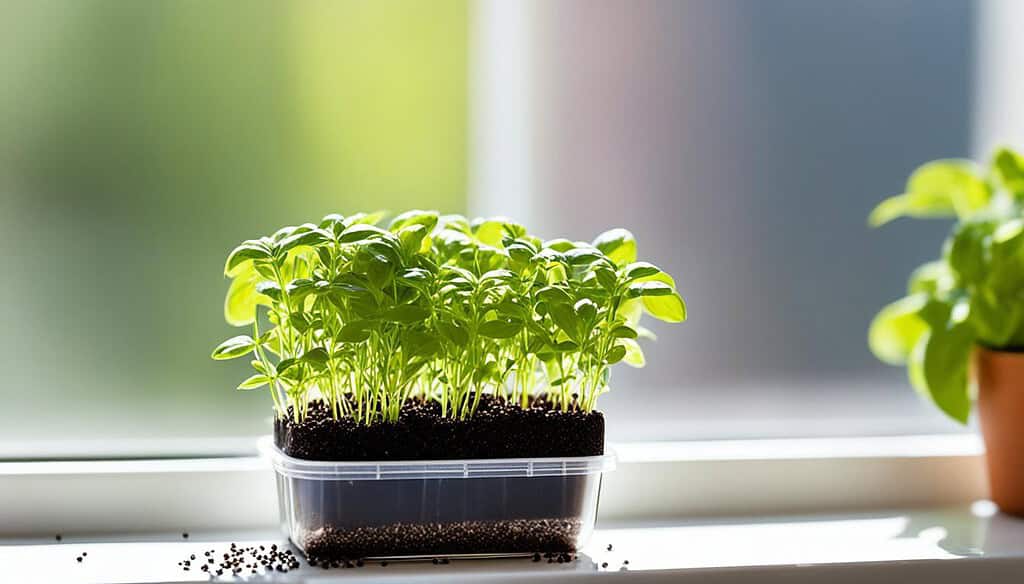
Planting and Germination
Plant basil seeds thickly on the soil and cover them lightly. They start to grow in 2-3 days. The blackout method with weights helps seeds touch the soil, improving growth and strength.
Caring for Basil Microgreens
Give them at least 12 hours of light a day to green up. They grow slowly, especially in the cold. It takes about 21 days to grow fully. Keep the soil moist during their growth.
Harvesting and Storing
Harvest when they’re 2-3 inches tall, usually in 15-20 days. Cut just above the soil. Store them in an airtight container in the fridge, where they last a week.
| Nutrient | Benefit |
|---|---|
| Vitamins A, C, E, K | Antioxidant properties |
| Calcium, Magnesium | Bone strength support |
| Iron, Zinc | Blood health |
| Protein | Muscle development |
Basil microgreens are packed with nutrients, offering 4-5 times what mature basil does. They’re full of vitamins, minerals, and anti-inflammatory compounds, boosting health and wellness.
Exploring Other Micro Herb Varieties
Microgreens, also known as micro herbs, open up a world of flavors beyond basil. With over 1,500 types to grow and eat, you have many options. Let’s look at some popular micro herbs that are easy to grow indoors.
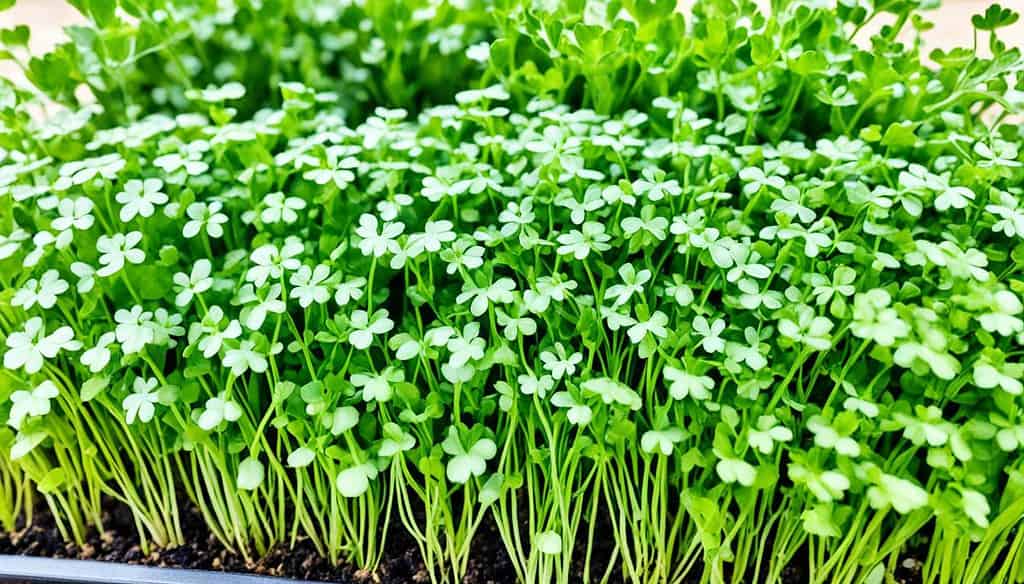
Cilantro microgreens are a hit with home growers. They add a zesty, citrusy flavor to dishes and can be picked in 10-20 days. Red cabbage microgreens bring a pop of color and are full of antioxidants, making them great for your indoor garden.
Here’s a quick look at some popular micro herbs and their harvest times:
| Micro Herb | Family | Harvest Time (Days) |
|---|---|---|
| Cilantro | Apiaceae | 10-20 |
| Dill | Apiaceae | 7-14 |
| Fennel | Apiaceae | 7-28 |
| Basil | Lamiaceae | 12-20 |
For beginners, microgreens like kale and radish are great. They grow fast, with kale ready in 7-10 days and radish in the same time. These micro herbs bring a burst of flavor and nutrition to your meals.
Microgreens are called a ‘superfood’ because they’re full of fibers, minerals, vitamins, and antioxidants. They can be picked 7 to 21 days after germination, depending on the type. This quick growth makes them an exciting addition to your cooking.
When trying different micro herb varieties, remember not all young plants are safe to eat. It’s important to research and use high-quality seeds for microgreens to ensure safety and good growth.
Tips for Successful Microgreen Cultivation
Growing micro herb seeds is rewarding. With the right approach, you can enjoy tasty greens and get many health benefits at home. Here are some key tips to make your microgreens thrive.
Optimal Lighting Conditions
Microgreens need lots of light to grow well. Put your growing mat near a sunny window or use grow lights. Make sure they get 12-16 hours of light each day. This helps prevent them from getting too long and keeps their colors and flavors rich.
Watering and Humidity Control
Keeping your microgreens moist is key. Use a spray bottle to mist them gently. But don’t overwater, as that can cause mold. Good air flow helps control humidity and keeps your micro herbs healthy.
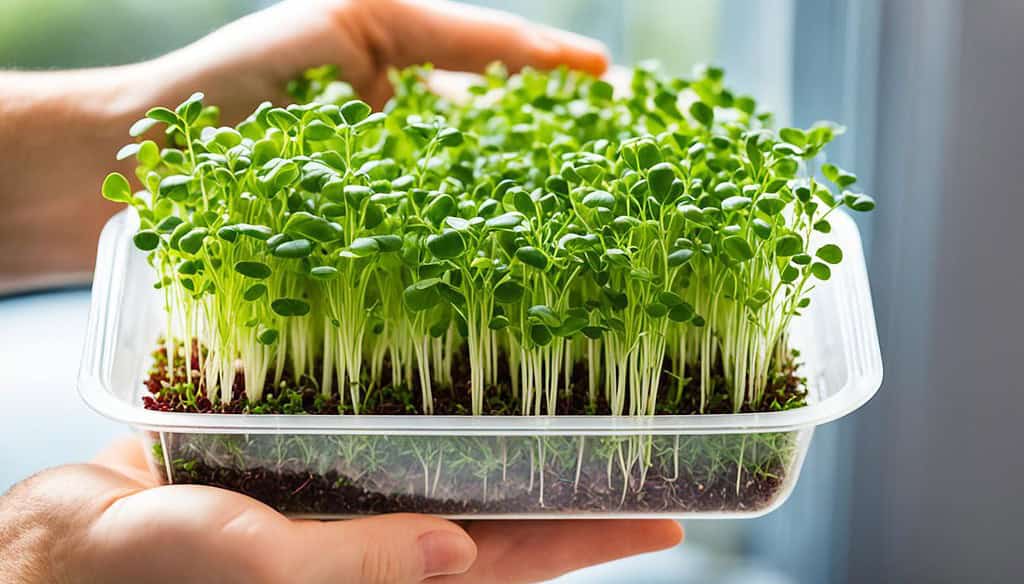
Common Issues and Troubleshooting
If your microgreens aren’t doing well, check these things:
- Poor germination: Make sure seeds are fresh and planted correctly.
- Slow growth: Adjust the light or temperature if needed.
- Yellowing leaves: This could mean you’re watering too much or not enough nutrients.
Some microgreens like lemon balm or basil have special needs. With practice, you’ll get better at growing these nutritious and pretty greens. They can also help lower the risk of some health problems, making them a great addition to your diet.
If you’re still having trouble, don’t worry. Most microgreens grow back fast, so you can start again. Keep trying different things to see what works best for your garden.
Conclusion
Growing microgreens at home is a rewarding journey. It brings fresh, nutrient-dense greens right to your kitchen. These tiny powerhouses pack a flavorful punch. They can elevate your culinary creations.
Microgreens are low in calories, with about 30 calories per 100 grams of mixed greens. They are a smart addition to any diet. They are rich in nutrients and antioxidants.
The microgreens market is booming, valued at over USD 1.2 billion in 2019. It’s expected to reach USD 2 billion by 2028. This shows their growing popularity. From basil to other micro herb varieties, there are many options to choose from.
Whether you’re a novice or an experienced gardener, you can find a variety that fits your skill level. Starting with easy-to-grow mustard seeds is a great way to begin.
Success in microgreen cultivation comes down to proper techniques. Using a spray bottle to mist the soil helps maintain moisture levels. This prevents overwatering.
As you explore different varieties, you’ll discover unique flavors and aromas. Each can add depth to your dishes. By following the steps in this guide and experimenting with various micro herbs, you can enjoy a continuous supply of homegrown microgreens.
Research shows that microgreens are rich in bioactive compounds. They offer superior nutritional quality compared to baby leaves and adult lettuce. By growing your own microgreens, you’re embracing a sustainable, health-conscious lifestyle.
This lifestyle is as rewarding as it is delicious. It adds flavor and nutrition to your meals.
Enhance your culinary experiences with homegrown microgreens. Microgreens are young vegetable greens harvested early, usually 7-14 days after germination. Micro herbs are young, aromatic herbs harvested early, like micro basil and cilantro. Both are packed with flavor and nutrients. Growing microgreens at home means you can have fresh, nutrient-rich greens all year. It saves money and lets you try different flavors and varieties. First, you need a shallow tray, growing medium, seeds, and a sunny spot or grow light. Prepare the soil, sow seeds thickly, keep it moist, and give it enough light for growth. Basil microgreens are loved for being easy to grow and having a strong basil taste. They start germinating in 2-3 days and are ready in 10-14 days, making them quick to harvest. You can grow cilantro, dill, parsley, chives, and fennel, each with its own flavor and nutrition. Red cabbage microgreens also add color and antioxidants to dishes. They need 12-16 hours of light a day, consistent moisture, and good air flow. Keep an eye on humidity and fix problems like poor germination or fungal issues by adjusting the environment. Use them as garnishes, in salads, soups, and sandwiches. They add flavor, aroma, and beauty to dishes, and are packed with nutrition. FAQ
What are microgreens and micro herbs?
What are the benefits of growing microgreens at home?
How do I get started growing microgreens at home?
What makes basil microgreens special?
What other micro herb varieties can I grow?
What are the optimal conditions for growing microgreens?
How can I use microgreens and micro herbs in cooking?





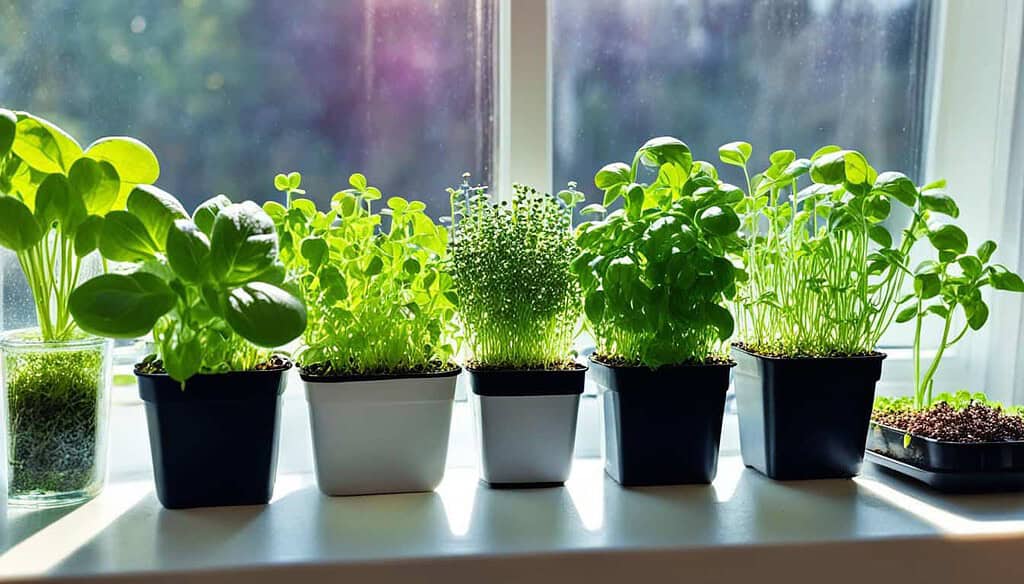
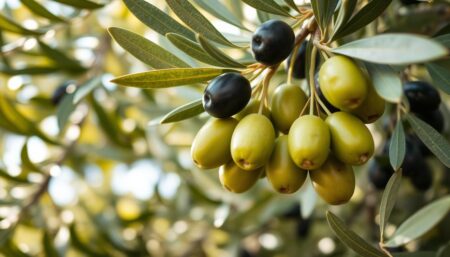



11 Comments
*Actually* the nutrient density of microgreens has been well-documented in several studies, most notably by the USDA and independent health institutes. The significant presence of vitamins C, E, and K certainly provides measurable health benefits.
*microgreens* have more nutrien that regular greens?!?! huhh all this time I been eatin full grown kale for nothin 😤 where can i get these magic plantsss?
Microgreens are a gamechanger!!! It only took me like a week to grow mine and now I’m throwing them in all my meals 🥗🍞 even tho my fam thinks i’m obssessd lol.
Samee! Once you start u cant stop lol…they make EVERYTHING taste better!
‘Micro herbs’ are honestly just an excuse to make your food look fancy when you can’t cook well 🤷♀️ but hey at least you can pretend you’re on MasterChef.
Lol yup now I just need Gordon Ramsey to yell at me while I’m garnishing my burnt toast with cilantro microgreens 😂🔥.
Wow microgreens are the super hero of plants!! 😆 I cant believe they got 40 times more nutrients. Who knew such tiny guys cud be so powerfil!
Ikr?? it’s like they’re small but MIGHTY 💪🌱
@SunnyPaws I just started growing some and it’s crazy how quick they grow! Like, faster than my patience level!
‘Nature’s flavor bombs’ really? Do they come with a warning label too? 🌿💣 #explosionofflavor
Is there an app that automates this? I mean who has time for manual watering and sunlight stuff? Just saying…